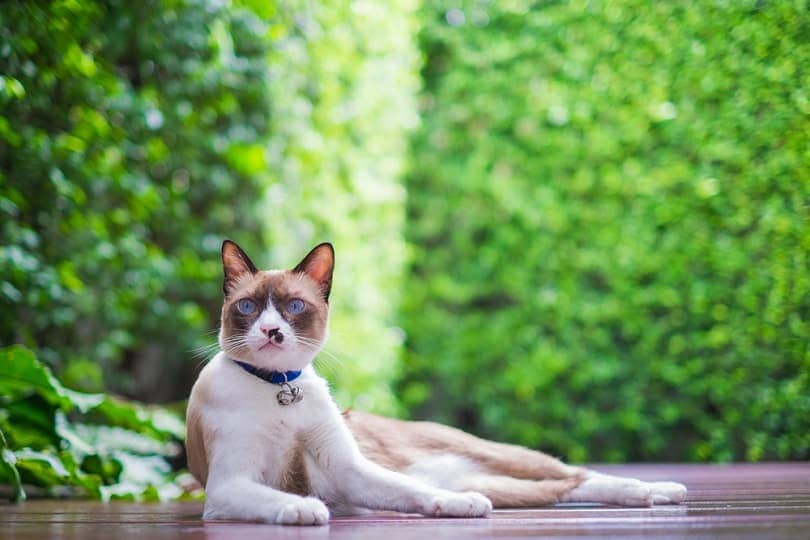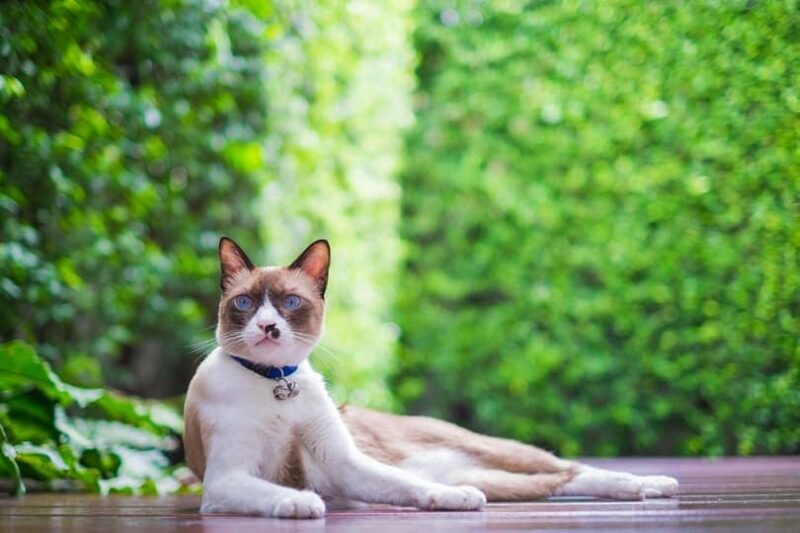The Snowshoe cat is a popular breed originating in the United States during the 1960s. These sweet-natured cats look as though they’re wearing a mask with darker markings on their ears, legs, and tail. They have beautiful, bright blue eyes and a short white, black, tan, or brown coat.
Overall, Snowshoes are regarded as relatively healthy, which is excellent news if you’re considering getting one of these pretty cats. However, like other felines, Snowshoes are prone to common health issues, which we’ll cover in detail below. However, just because Snowshoe cats are predisposed to some health issues doesn’t mean your cat will develop these problems. Instead, the information is here to help you and your vet plan for your cat’s unique medical needs and give your Snowshoe the best care possible.

The 10 Common Snowshoe Cat Health Problems
1. Feline Lower Urinary Tract Disease (FLUTD)
Feline Lower Urinary Tract Disease (FLUTD) is a term used to describe several conditions affecting a cat’s lower urinary tract. FLUTD is most often seen in middle-aged, overweight cats who don’t exercise enough and those who use indoor litter boxes. It’s also seen more commonly among cats that eat only dry cat food.
- Straining to urinate
- Urinating small amounts
- Urinating outside the litter box
- Vocalizing while urinating
- Blood in urine
How FLUTD Is Diagnosed and Treated
If you suspect your Snowshoe has FLUTD, your vet will ask you about your cat’s behavior and conduct a physical exam. A urinalysis will likely be done to rule out a urinary tract infection and urine crystals. Your vet may also run some blood tests to look for signs of diabetes or kidney disease, which can cause urinary tract problems.
FLUTD treatment is very individualized and depends on what urinary tract issue your cat is suffering from. You may be told your cat needs to drink more water and take medication if it’s determined they have a urinary tract infection. Your cat may need surgery if they suffer from something more serious, like bladder stones. It all depends on the diagnosis.
2. Feline Rhinotracheitis Virus Infection (FVR)
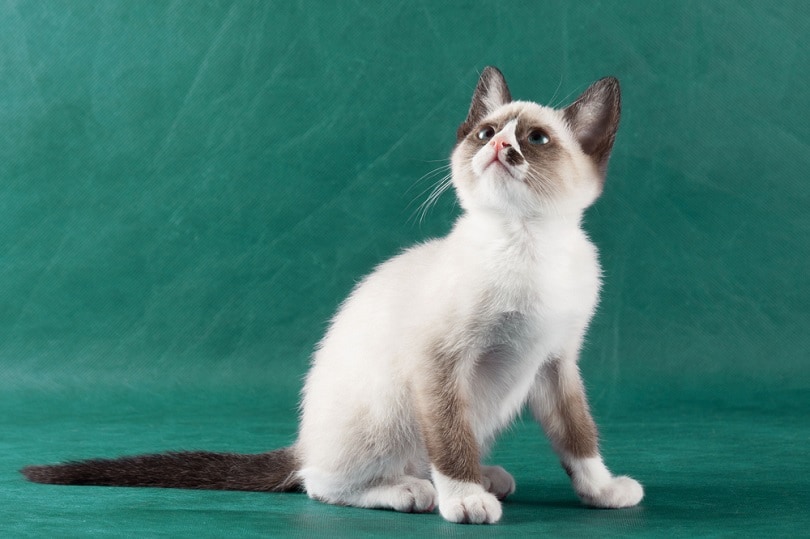
Feline rhinotracheitis virus infection (FVR) is commonly called feline herpesvirus 1. This is a common feline virus that causes an infection in the nose and throat of cats. FVR affects cats of all ages, but it’s more likely to affect kittens, pregnant cats, and those that are sick or have suppressed immune systems.
A cat with FVR develops this infectious virus by coming into direct contact with another cat with FVR or items that have been contaminated with the virus. These items could include things like clothing, food, and water dishes.
A cat with FVR can develop a weakened immune system, opening the door to possible secondary bacterial infections if the cat can’t fight off the disease.
- Sneezing
- Runny discharge from nose and eyes
- Eyelid inflammation
- Congestion
- Fever
- Lethargy
How FVR Is Diagnosed and Treated
If you suspect your Snowshoe cat has FVR take them to the vet, your veterinarian will review your cat’s medical history and conduct a physical examination. Your vet may take some oral swabs to confirm. If confirmed, the treatment is based on how severe the symptoms are.
If your cat has an eye infection with it, you may get some topical eye drops for your cat. If the infection is more widespread, antibiotics, probiotics, or lysine may be prescribed.
3. Diabetes Mellitus
Diabetes mellitus is a pancreatic disease caused by the failure of the pancreas to regulate blood sugar. This condition is seen more frequently in older, overweight cats and is more common among males than females. It appears to be inherited in Snowshoes.
- Frequent urination
- Excessive thirst
- Increased appetite
- Unexpected weight loss
- Lethargy
How Diabetes Mellitus Is Diagnosed and Treated
If you take your Snowshoe to the vet because you suspect they have this disease, your vet will ask about any signs you’ve observed. They will also conduct a thorough examination of your cat.
Urine and blood tests are likely to be ordered to rule out other diseases and conditions. While reviewing the tests, your vet will look for abnormally high blood glucose levels and glucose in the urine.
If your Snowshoe has diabetes, lifestyle changes may be part of the treatment, like weight loss and weight control. Your vet may also prescribe insulin for your cat and show you how to test your pet’s glucose levels and give the injections.
An important aspect of Diabetes Mellitus treatment is the ongoing monitoring of your cat’s response to insulin so that adjustments can be made if needed.
4. Feline Obesity
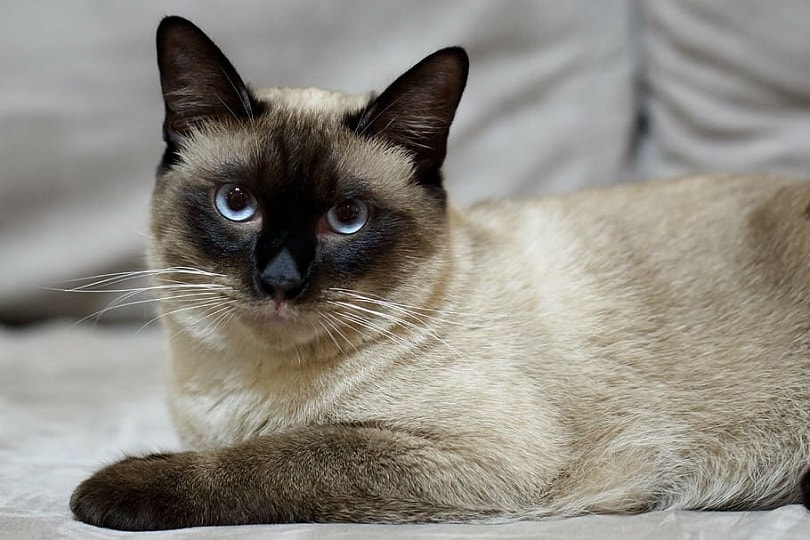
A Snowshoe cat is a solidly built, medium-sized animal that weighs 7–12 pounds. They’re susceptible to obesity like many other breeds. A cat with feline obesity has a body weight that’s 20% or more above the normal weight of the breed. They can develop more serious problems, like diabetes and heart disease, so it’s not wise to ignore your cat’s weight.
- Unhealthy eating habits
- Difficulty climbing stairs or jumping
- Disinterest in physical activity
- Joint Pain
How Feline Obesity Is Diagnosed and Treated
If you take your Snowshoe cat to the vet to check if they’re obese, your vet will visually examine them and use their hands to feel the rib and hip bones. You will likely not be able to feel the bones if your cat is obese. Your vet may also run tests to see if your cat has diabetes or other weight-related issues, like cardiovascular disease.
Feline obesity is often treated by limiting how many calories a cat eats. If your Snowshoe is obese, your vet may recommend a diet change and tell you to switch to cat food with a weight control formula. Your vet may also encourage you to play with your cat more often to get them moving more.
5. Progressive Retinal Atrophy (PRA)
Progressive retinal atrophy (PRA) is a term used to describe a group of degenerative eye diseases affecting the retina. There are two main types of PRA in cats: early-onset or inherited.
This type of eye condition happens when the photoreceptor cells of the retina develop abnormally, leading to early-onset blindness, which is an inherited condition.
- Night blindness
- Bumping into things at night
- Reluctance to go into dark rooms
- Decreased desire to go outside
How Progressive Retinal Atrophy Is Diagnosed and Treated
If you take your Snowshoe to the veterinarian for suspected PRA, they will use a special instrument called an ophthalmoscope to examine the back of your cat’s eyes. They are looking for abnormalities in the optic nerve and retinal blood vessels.
If your cat has PRA, there is no effective treatment for this disease except for using antioxidant supplements or vitamins as support. If cataracts or retinal detachment are present, your vet may attempt to treat those to prevent further vision loss.
6. Feline Dental Disease
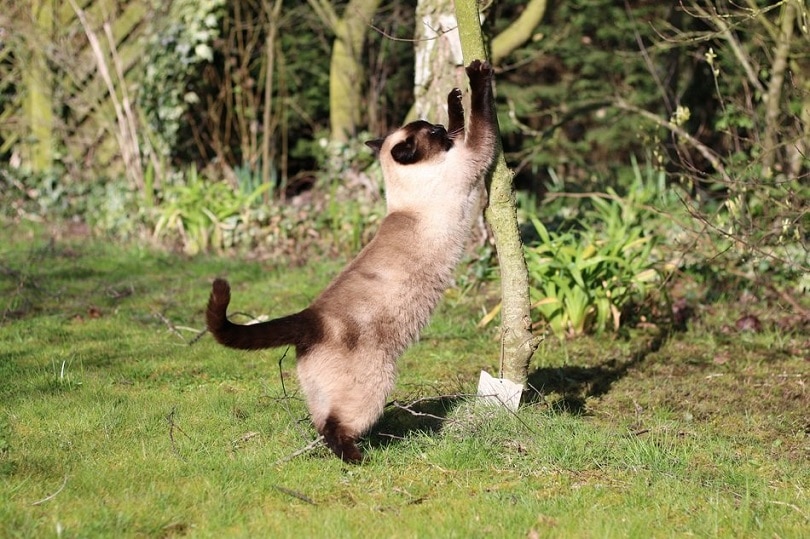
Many breeds, including Snowshoes, develop a feline dental disease affecting the teeth and gums. Dental disease typically affects cats older than 4 years of age, and most forms are preventable and treatable.
Gingivitis, periodontitis, and tooth resorption are the most common dental diseases affecting cats. A cat with any one or more of these forms of dental disease can have a lower quality of life, which can lead to further health issues, like infections.
- Red, swollen, or painful gums
- Plaque on the teeth
- Bleeding gums
- Painful chewing
- Disinterest in eating
- Weight loss
How Feline Dental Disease Is Diagnosed and Treated
Your vet will conduct a thorough oral examination for feline dental disease. They will look for signs of disease, like an accumulation of plaque, red and swollen gums, and bleeding gums. The treatment for feline dental disease depends on what is discovered during the examination and how severe the signs are.
Your vet may remove plaque from the teeth while your cat is under anesthesia, extract diseased teeth, or prescribe medication. Your vet may also recommend that you clean your cat’s teeth at home and give them cat dental treats that reduce plaque.
7. Hyperthyroidism
Hyperthyroidism is a common disease in older cats. It is characterized by the overproduction of thyroid hormones that increase the body’s metabolic rate. When your cat has undiagnosed hyperthyroidism, they can develop high blood pressure or heart disease, making early diagnosis and treatment very important.
It’s unknown what causes hyperthyroidism, but it’s suspected that it has something to do with increased exposure to dietary iodine, as many cats with this disease have elevated iodine levels. Dietary iodine is in seaweed, beef liver, chicken, fish, shellfish, eggs, and dairy products.
- Weight loss
- Enlargement of the thyroid gland
- Increased appetite and water consumption
- More frequent urination
- Restlessness
- Increased vocalization
- Periodic vomiting or diarrhea
How Hyperthyroidism Is Diagnosed and Treated
Your vet will conduct a thorough examination and run tests for blood work, X-rays, an ultrasound, or urinalysis. If your cat has Hyperthyroidism, your vet may put your cat on a strict prescription diet. Other treatment possibilities include radioactive iodine treatment, daily medication, and surgery to remove one or both of the thyroid glands.
8. Kidney Failure
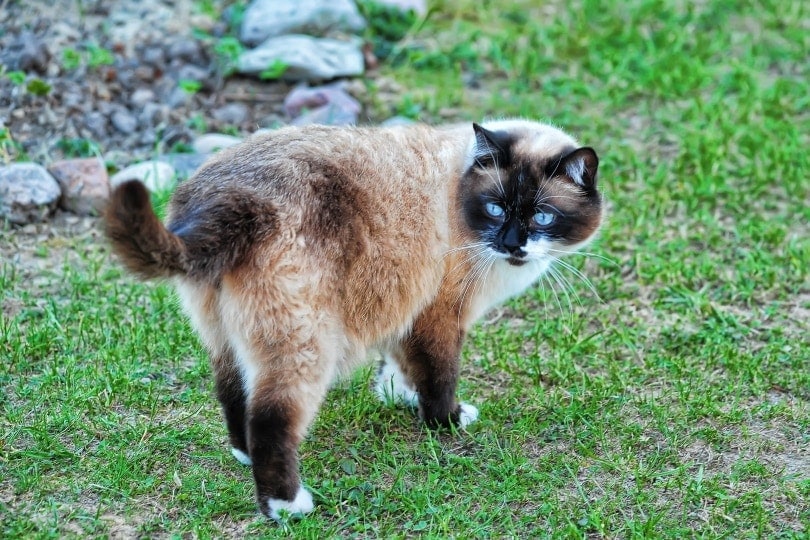
When a cat’s kidneys cannot properly perform, they can no longer clean waste from the blood and a diagnosis of kidney failure is often given. Kidney failure typically affects older cats, but kittens can also be born with kidney diseases. The common causes of kidney failure include old age, trauma, toxins, and infections.
- Frequent urination
- Urinating outside the litter box
- Increased water consumption
- Vomiting
- Diarrhea
- Bloody or cloudy urine
- Bad breath
- Brownish coloring to the tongue
- Dry coat
- Constipation
- Weakness and lethargy
How Kidney Failure Is Diagnosed and Treatment
There’s no time to waste if you think your cat has kidney failure since it can be fatal. Your vet will run blood and urine tests, take some X-rays, and possibly perform an ultrasound to make a diagnosis.
If your cat has kidney failure, their treatment depends on the severity. Your vet may give your cat fluids through an IV, put your cat on a special diet, prescribe medication, or schedule surgery to remove renal blockages.
9. Hypertrophic Cardiomyopathy (HCM)
Snowshoe cats can develop a heart condition known as hypertrophic cardiomyopathy (HCM). It’s characterized by a thickening of the heart muscle walls, causing a decline in cardiac function.
This disease comes with complications, including the possibility of clot formations that can block a major artery that supplies blood to the cat’s hind legs. If this happens, it’s called feline arterial thromboembolism, which is considered a medical emergency.
While there is no cure for HCM, it can be managed and treated with medication and dietary changes.
- Labored or rapid breathing
- Open mouth breathing
- Lethargy
- Sudden weakness
- Collapsing episodes
How HCM Is Diagnosed and Treated
If you take your Snowshoe to the vet because you think they have HCM, your vet will ask about your cat’s health history and check their heartbeat. They will use echocardiography to look for signs of heart muscle thickening and to check your cat’s heart rate and overall health of the heart muscle.
If an HCM diagnosis is made, your cat will likely be prescribed medication to control their heart rate and to remove any pleural fluid that may be built up around the lungs. Your vet may also prescribe a special diet for your cat that limits salt and increases healthy omega-3 fatty acids.
10. Gastroenteritis
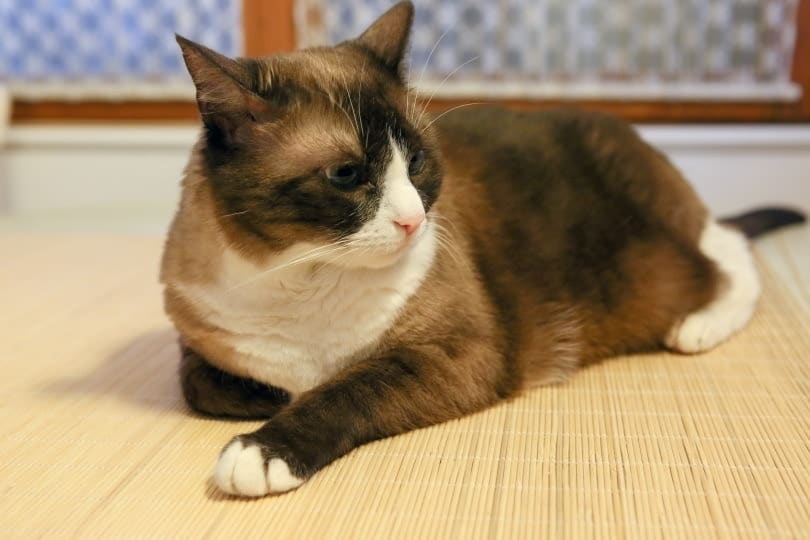
Snowshoes, like other breeds, can develop gastroenteritis. This is a term used to describe inflammation of the gastrointestinal (GI) tract, which includes the stomach and intestines.
Many things can cause gastroenteritis, including bacterial infections, viruses, parasites, poisoning, medications, ingesting foreign bodies like strings or threads, and inflammatory diseases.
- Episodes of vomiting and diarrhea
- Dry heaving
- Abdominal tenderness
- Lethargy
- Low-grade fever
How Gastroenteritis Is Diagnosed and Treated
For a vet to treat your cat for gastroenteritis, they need to know what is causing the signs. Your vet will ask you about your cat’s medical history, their current diet, and any possible exposure they’ve had to medications, cleaning products, or pesticides.
Your vet will then examine your cat and may conduct diagnostic testing to look for signs of infection, dehydration, and organ system abnormalities. The treatment for gastroenteritis may include fluid replacement therapy, antibiotics, and anti-vomiting medications, depending on your vet’s diagnosis.
Conclusion
While the Snowshoe cat is considered a healthy breed, they’re prone to developing common cat health problems like any cat. Now that you know the health issues that can affect your Snowshoe, you can work with your vet to keep your beautiful cat healthy and happy. If you suspect your cat is sick, don’t hesitate to contact your veterinarian immediately, as it’s better to be safe than sorry!
See Also:
Featured Image Credit: Tawach, Shutterstock
Contents
- The 10 Common Snowshoe Cat Health Problems
- 1. Feline Lower Urinary Tract Disease (FLUTD)
- 2. Feline Rhinotracheitis Virus Infection (FVR)
- 3. Diabetes Mellitus
- 4. Feline Obesity
- 5. Progressive Retinal Atrophy (PRA)
- 6. Feline Dental Disease
- 7. Hyperthyroidism
- 8. Kidney Failure
- 9. Hypertrophic Cardiomyopathy (HCM)
- 10. Gastroenteritis
- How Gastroenteritis Is Diagnosed and Treated
- Conclusion

